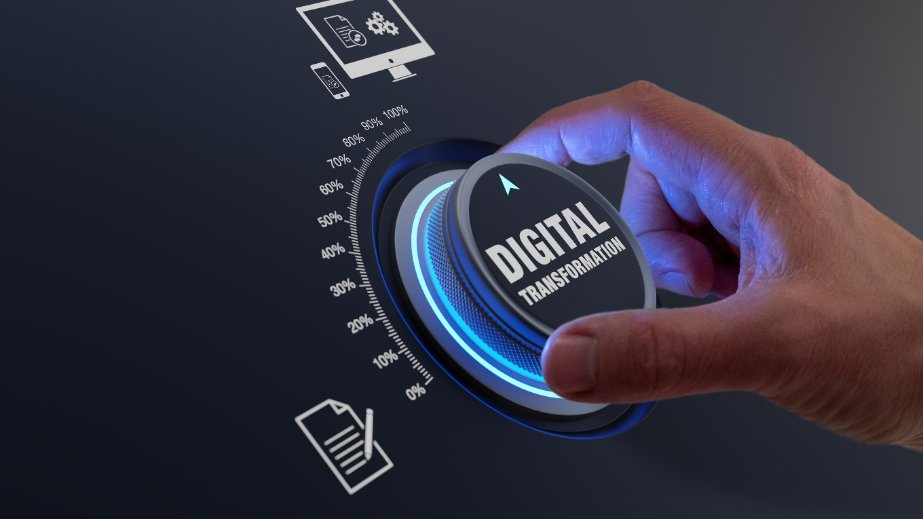The Digitalization Imperative for Associations

Why Should Associations Focus on Digitalization?
Members are the association’s focus. Members are retained when the association delivers on its value proposition. And members today expect consumer-grade digital experiences that provide exceptional value. That can be done---if the Digitalization Imperative is embraced by the association.
Trends of Digitalization
Two trends have shaped technology over the last 50 years:
- Moore’s Law - the principle that the speed and capability of computers will double roughly every two years, and
- Metcalfe’s Law – the principle that every incremental user in a network adds more than their weight in connection value (this is also known as the “network effect”)
These two forces have combined to create the two most powerful resources in the digital toolbox: bandwidth and computing power. All of today’s technical innovations take advantage of these intersecting digital forces, including Artificial Intelligence (AI), the Internet of Things (IoT), cryptocurrencies, and many others.
And the pace of change is only getting faster---MUCH faster. New technologies are creating new business models and disrupting old ones. Associations are not immune to this disruption.
Technology Adoption Curve
Research has been done by Harvard Business Review (HBR) regarding technology adoption curves.
This term defines a sociological framework that describes how different people in various demographic groups and possessing various behavioral characteristics adopt and react to new technologies. In other words, it shows how various groups of people adopt the technology.
In the past, technology adoption generally happened in predictable stages. Innovators and Early Adopters were in the vanguard, followed by a much larger group of mainstream customers and then by a smaller group of ‘strategic laggards.’ It is important to note that most associations have traditionally fallen into this latter category, demonstrating extremely risk-averse behavior towards technology adoption.
HBR found that, more recently a new pattern has emerged which compresses the adoption curve into two short stages: Trial Users and Everybody Else. This trend is driven by several factors including the fact that members expect us to be “like Amazon.” There is an expectation that members will be served with minimal friction, on any device, and in every location (including in-flight wi-fi connections).
This is important in the context of associations and non-profits because traditionally they have been prone to take a ‘wait-and-see’ posture towards technology. They have been comfortable living in the mainstream or late adoption positions relative to digital transformation. This is often justified by a view that non-profits don’t need to compete because they are not ‘commercial’ entities. However, “non-profit” is a tax status, not a business strategy.
The impact of this new pattern of digital adoption cannot be overstated. Most gatherings of association executives quickly turns towards the “New Normal” discussion for associations. This imperative manifests in many forms: Digital Transformation initiatives, technology assessments, technology road mapping, new system selections, and cloud adoption strategies.
In principle, there will be a cultural shift necessary for most associations to adopt a more agile approach to Digitalization. This recalls the famous quote by Peter Drucker that, “Culture eats strategy for breakfast.” Addressing Digitalization is as much about culture as it is about technology.
Digital Ground Game
It’s clear that the game has changed from the business models of the past.
Members now expect “digital first” products and services. As consumers, they can make a rideshare or dinner appear at the touch of a button. During the recent pandemic, they survived on Instacart and Amazon Prime. Amazon “knows” them so well that it is sometimes frightening.
Despite some obvious limitations (none of us is Google or Amazon), members have developed an expectation that engagement with the association’s products and service will provide the same consumer-level service and value.
The secret sauce for these consumer services (who now represent associations’ competition) is an obsession with the digital customer experience. Uber, Amazon, and Google all maintain highly complex and well-integrated application ecosystems. In the consumer world, it is unacceptable to require multiple logins, delayed payment processes, or inaccessible customer service processes.
The good news for Digitalization efforts is that many of the same tools used by Amazon, Uber, and other excellent consumer companies are now available to associations to help us create a personalized and friction-free journey for members.
The Digital Imperative: Digital First, Digital Last, and Digital Fast
The complexity of application ecosystems is very high, and the expectations of members is equally high. Typically, most associations have between 12 to 20 core applications that must work together.
When they don’t work well together, friction is created, and the process slows down or becomes cumbersome. Research has shown that users will quickly abandon digital platforms that are unwieldy, slow, or lack personalization.
The work of digital transformation involves strategic planning, business process modeling, data modeling, vendor management, and (sometimes) actual coding. There is no magic solution but organizations who master the work of Digitalization will dominate in terms of sustainability, profitability, and mission impact.
As described in the HBR adoption curve, late adopters are a vanishing breed and strategic laggards do not exist. Digitalization for associations is hard work, but it is work that is necessary for the survival of the association.
Lessons Learned
First, to undertake a Digitalization initiative, it is important to thoroughly understand the current situation and capacity. The assessment should realistically inventory the people, process, and technology assets available to the organization. Don’t forget that resources exist outside of the formal organization in the form of peer networks, consultants, and vendors of innovative new products.
As part of the “people” assessment, focus should be on the organizational readiness to undertake this mission. Referring back to “culture eats strategy for breakfast,” most digital transformation project fail at the level of culture, not the technology.
The association should be obsessed with its “North Star,” its customers and members. While back-office efficiency is important, members don’t join an AMS or accounting system. They join an organization for content. Make sure that the Digitalization project is obsessively focused on the customer experience on the association’s digital platforms.
Using a clearly articulated roadmap to execute within a formal project management governance structure is crucial. Transparency and accountability about successes (and failures) is key to success. Don’t “boil the ocean” and try to do it all at once. Create small victories remembering that technology changes rapidly. If a “big bang” is planned, a multi-year project with little incremental impact will have trouble sustaining the effort. Instead, choose progress over perfection.
Lastly, don’t forget to celebrate successes along the way. The best digital companies employ Lean Startup principles and constantly evaluate engagement with their Minimum Viable Products (MVPs). Common wisdom is “don’t build things that customers won’t buy.” It’s important to deliver frictionless digital value to customers faster (or at least as fast) as the association’s competitors.
Digital technologies are creating new business models and disrupting old ones. Associations are not immune to this trend. If you are interested in engaging with Cimatri as part of your technology strategic planning efforts, contact us to learn how we can help you build your digitalization roadmap.



